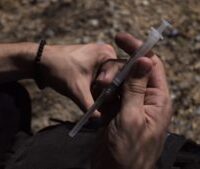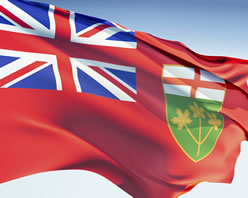Indigenous Addiction Treatment in Canada
Indigenous addiction treatment in Canada is an important component of boosting First Nations mental health and wellness. There are many drug rehabs and alcohol treatment programs in Canada, and some serve specific populations. For example, last month we wrote about LGBT specific drug and alcohol treatment in Canada. This blog will explain why there is a need for indigenous specific treatment and how to access publicly funded First Nations drug and alcohol programs. Indigenous Addiction Treatment in Canada The federal government funds the National Native Alcohol and Drug Abuse Program (NNADAP) which incorporates prevention, research, treatment, and training. There are many NNADAP funded programs across the country. However, there are also provincial bodies that are First Nations specific. For example, BC has the First Nations Health Authority (FNHA) which helps facilitate 10 residential treatment centres in the province that are NNADAP funded. These treatment centres are relatively evenly spread across the province giving more coverage to rural communities. While services and client type varies between facilities, these drug and alcohol rehabs accept those with physical disabilities, concurrent disorders, clients stabilized on methadone or Suboxone, and clients on prescribed psychoactive medication. The federal government has a list of all its NNADAP funded facilities here. BC has 11, Alberta has 7, Saskatchewan has 10, Manitoba has 5, Ontario has 10, Quebec has 6, and the Atlantic provinces share 6 (though there are none on PEI). The majority of these Canadian drug and alcohol treatment facilities are inpatient and many offer outpatient services as well. While they provide much of the same treatment you would receive in a regular publicly funded program, they usually centre traditional healing methods. Traditional healing often takes place on the land and can involve different kinds of cultural ceremonies. FNHA defines traditional healing as the “health practices, approaches, knowledge and beliefs incorporating First Nations healing and wellness while using ceremonies; plant, animal, or mineral-based medicines; energetic therapies; or physical/hands on techniques”. Why Conventional Treatment Can Benefit From Traditional Healing A 2012 study published in Substance Abuse Treatment, Prevention, and Policy looked at cultural interventions to indigenous addiction treatment in Canada and the USA. Just over half of the programs the study looked at were residential, and all of them integrated both Western and “culture-based” treatment services. While there was a wide range of traditional healing methods implemented, sweat lodge ceremonies were used in 68% of treatment programs. The results showed that all areas of wellness were improved in these programs, particularly in reducing or eliminating substance use problems. Although the study concedes that more research needs to be done, there is strong evidence that traditional healing in addiction treatment is beneficial in all areas of wellness. If you are looking for more indigenous addiction treatment options have a look at our First Nations specific treatment page or contact our specialist for help. References: Addictions Treatment for First Nations and Inuit Traditional Healing Cultural Interventions to Treat Addictions in Indigenous Populations: Findings from a Scoping Study JMC 2018.06.19 The post Indigenous Addiction Treatment in Canada appeared first on Canada Drug...
Harm Reduction and Supervised Injection Sites in Canada
Harm reduction is a term that Canadians are hearing more and more as the opioid crisis deepens and public health officials look for ways to mitigate the fallout. Supervised injection sites are a key component to a lot of harm reduction policies, and both concepts need to be better understood. Some Canadians think that needle-exchange programs and supervised injection sites are the ‘government giving addicts free drugs’ and don’t understand why this is the government’s response. This blog will explain what these two concepts are, and why they are considered to be both innovative and effective in the fight to save substance users’ lives. What is Harm Reduction? The Canadian Drug Policy Coalition defines harm reduction as “policies, strategies and services, which aim to assist people who use legal and illegal psychoactive drugs to live safer and healthier lives.” The Coalition believes any person has the right to receive respect, compassion, and the services they require whether they choose to decrease their substance use or not. The BC Centre for Disease Control includes a number of services and strategies under the umbrella of harm reduction, such as: overdose prevention and response training, impaired driving prevention campaigns, needle distribution programs, substitution therapies, supervised consumption facilities, support programs and outreach. This is a good reminder that harm reduction is not just about creating access to clean supplies and space, but also to provide outpatient services like education and peer support programs. These support services make it easier for people to reduce their consumption of substances, and find recovery treatment. What Does Harm Reduction Look Like in Canada? Despite opposition, in 2007 the Conservative federal government removed harm reduction as an official element of the country’s federal drug strategy. During the same time, Canada opposed harm reduction in international forums, and in 2015 passed Bill C-2 that created unnecessary hurdles to establishing supervised consumption sites. The federal Liberals have not repealed Bill C-2, even in the midst of the opioid epidemic. Bill C-2 requires health authorities to go through many public consultation meetings and extra red tape to get a permit to operate a supervised injection site. Vancouver Coastal Health said that the process to apply for exemptions is “extremely challenging” and involves a large amount of health-care resources that “could be better spent on direct client care and addiction treatment.” However, due to the dramatic increase in overdose deaths over the last two years provinces are putting in their own protections. For example, in 2016 Alberta implemented a harm reduction strategy with supervised consumption sites at the heart of their plan to save opioid user’s lives. Vancouver, and BC as a whole is also one of the most vocal proponents for nationwide harm reduction policies as the province has seen the most overdose deaths, totaling over 4000 in 2017 alone. Supervised Injection Sites in Canada In 2003, Insite, the first supervised injection site in North America opened in Vancouver’s Downtown Eastside. Insite has been a testing ground to prove the efficacy of supervised consumption sites, and has provided a kind of blueprint for other provinces looking to increase their services. One of the biggest concerns local residents and city officials usually have about supervised consumption sites is that they will increase the amount of littering, loitering, and drug use in their community. However, Insite and other supervised injection sites have shown that this is not the case and in fact they decrease the amount of public drug use in the area. Substance users are still members of our community, and their health care needs should be just as important...
Needle Exchange Program Delayed for Canadian Prisons
We reported in May that Correctional Services Canada (CSC) had announced plans to launch a trial needle exchange program in two Canadian prisons this month. Yesterday, CSC announced the planned program for a men’s federal prison and the federal women’s Kitchener institution has been delayed one week. The manager of epidemiology services for CSC said documents needed to be tweaked and redrafted before the program could effectively be rolled out. This program is part of a new harm reduction strategy for Canadian prisons. Why Introduce Needle Exchange Programs into Canadian Prisons? There is a strong need for needle exchange programs in Canadian prisons. A 2010 report found that the rates of HIV and Hepatitis C infections in prison are 10 to 20 times higher than that of the general population. Injection drug use and prison tattoos are considered the main reasons for this discrepancy. To help combat this, in 2005 the CSC began a prison tattoo pilot program involving six federal institutions, however the Conservative government of the time ended it in 2006. Drug use doesn’t stop at the prison gates. First-hand testimony from currently and previously incarcerated people show that drugs are the main currency inside. Guards say they are having to fight infiltration from all areas; drones and slingshots with drug-filled tennis balls are just some of the ways of getting contraband into the facilities. Inmates who previously had no or minor drug problems can end up leaving as opioid addicts, a far cry from the ‘rehabilitation’ prisoners are supposed to go through during their term. It is clear that drugs are a huge problem in Canadian prisons, and that injection drug use will happen whether it is condoned or not. Needle exchange programs in prisons make public health sense to protect prisoners who are uninfected, as well as guards and other visitors to the institution. Hopefully the pilot programs start soon and can provide a roadmap for future programs. References: Federal Prisons to Begin Needle-Exchange Program Needle Exchange Program at Kitchener Women’s Prison Begins Today Prison Report Urges Needle Exchange Programs Prison Tattoo and Needle Programs Would Help Curb Hepatitis: Internal Memo Think Prison Forces an End to Drug Addiction? Think Again The post Needle Exchange Program Delayed for Canadian Prisons appeared first on Canada Drug...
Bill C-45 Passes, Legal Cannabis Still Months Away
This week the Senate finally passed the bill to legalize and regulate marijuana, however it will not become law until October 17. This 17 week buffer period was originally only supposed to be 8-12 weeks, however some provinces asked for an extension. It is to give the provinces time to get systems in place to facilitate access to legal cannabis through storefronts and other methods. Canada is only the second country in the world to legalize marijuana for recreational purposes nationwide. What does Bill C-45 entail Purchase fresh or dried cannabis, cannabis oil, plants and seeds for cultivation from either a provincially or territorially regulated retailer, or directly from a federally licensed producer Possess up to 30 grams of dried legal cannabis or its equivalent in public Share up to 30 grams of legal cannabis and legal cannabis products with other adults Cultivate up to 4 plants at home (four plants in total per household) Prepare varying types of cannabis products at home for personal use provided that no dangerous organic solvents are used in the process Quebec, Mantioba, and Nunavut want to be able to provincially regulate against the 4 plants allowed at home. While the federal government has left it to the provinces to do their own implementation of the new law, the Justice Minister has said the federal government will back up any citizen who takes their province to court over this issue. Another bill relating to cannabis legalization also passed recently. Bill C-46 strengthens the laws regarding alcohol and drug impaired driving. This law allows for mandatory roadside impairment checks, however the government is still trying to determine the best devices and tests to use to identify “high” drivers. References: Trudeau Says Pot will be Legal as of Oct 17, 2018 A Look at Each Province’s Rules for Marijuana Legalization The post Bill C-45 Passes, Legal Cannabis Still Months Away appeared first on Canada Drug...
New Brunswick Government Strategies for Treating Drug, Alcohol, and Other Addictions as well as Mental Health Priorities
Introduction New Brunswick is governed by the Liberal party presently and last year released its Family Plan which included mental health as one of is main tenants. Following stakeholder consultation, the provincial government realised New Brunswickers wanted addictions to be addressed as its own tenant as well. This blog will look at the five areas of focus in Supporting Those with Addictions and Mental Health Challenges, released in May 2017, a kind of addendum to the New Brunswick Family Plan. Surprisingly, it makes no new recommendations or commitments than what is already in the mental health section of the Family Plan. Supporting Those with Addictions and Mental Health Challenges This document unfortunately does not expand on the minimal recommendations outlined in the Family Plan. Also, despite it being a relatively recent publication it makes no mention of the current addictions and mental health climate in Canada which is wrestling with an opioid epidemic and the imminent legalization of marijuana. In comparison to other provinces like Alberta and Ontario, this document has vague goals and slim summaries showing how these goals might be met. For a province that has localized access to services it is disappointing there is not a greater emphasis on how to meet the needs of the many rural residents of NB. Below are the areas of focus and associated actions that the government has decided on: Adopting a proactive approach to improving mental health Action: Expanding successful addiction and mental health promotion and prevention initiatives throughout the province Bridging gaps in existing programs and services such as those addressing addictions Action: Improving community-based treatment options for those suffering from addictions and serious mental illness, such as implementing Supervised Community Care across the province. Action: Exploring the possibility of providing community-based treatment for offenders, which will address their addiction and mental health needs as well as the public safety concerns of communities Offer a collaborative model of care through an integrated, person-centered approach to service delivery Action: Developing an integrated recovery approach to service delivery across the continuum of care for those with addictions and mental health needs. Action: Establishing coordinated and interdepartmental interventions with partners in the primary health care, justice and public safety sectors in support of the treatment of patients with complex mental health needs. Action: Establishing a network of excellence in support of treatment of youth with complex mental health needs. Offering culturally relevant treatments and services, taking into consideration the individual’s social context. Action: Ensuring under-represented groups have respectful and appropriate access to services in addictions and mental health. Action: Exploring options to help individuals and families who assist seniors and dependents with a mental illness. Enhancing the knowledge and awareness of individuals, families, and health care and other service providers Action: Ensuring that information related to addiction and mental health treatment options are available to the public through various means, including web-based and print materials, and through the addiction and mental health intake process. Action: Reporting on progress in closing gaps on a number of addiction and mental health indicators between priority client populations across the province. Conclusion New Brunswick only has 8 locations in the province where you can access government funded addiction treatment. Bathurst, Campbellton, Edmunston, and Tracadie in the north are part of Vitalite Health Network. Frederiction, Miramichi, and Saint John are part of Horizon Health Network, and Moncton is served by both health authorities. These are the only cities in New Brunswick with service points, and should have been something for the government to consider when looking at how to bridge gaps in services. While the...
How to Access Public Drug Rehab and Alcohol Treatment Programs in New Brunswick
This month, learn how to access public drug rehab and alcohol treatment programs in New Brunswick in this installment of Provincial Snapshot. Each month, we are outlining the steps you must take to access public drug rehab and alcohol treatment in each province. This post will detail how to access different levels of addiction and mental health care. If you or someone you know requires urgent help, please call 911. Public Drug Rehab and Alcohol Treatment Programs in New Brunswick New Brunswick has eight Addiction Centres in the province. It is unfortunate there are only eight and they don’t cover the province evenly. However, each centre is home to a multitude of services and once there and assessed, you can be referred to almost any service you may need. Less specific to addiction but still closely linked, there are also 14 Community Mental Health Centres (CMHC) across the province. You can find your closest CMHC here. New Brunswick is Canada’s only official bilingual province, and so all these offices can provide service in both English and French. The eight cities that you can access public drug and alcohol treatment in New Brunswick are Bathurst, Campbellton, Edmunston, and Tracadie in the north which are part of Vitalite Health Network. Fredericton, Miramichi, and Saint John are part of Horizon Health Network, and Moncton is served by both health authorities. They all have comprehensive services available. These centres do not require a doctor’s referral, although that sometimes may help speed up the process for specialized services. Once you are assessed at the centre the staff will refer you on to the services you require, most of which will be accessed at the same location. Specialized addiction services that are available include inpatient detox, methadone maintenance, individual and group counseling, and short or long term rehab. These centres also provide services for family members and others affected by substance use, problem gambling, and mental health issues. For a contact list of the eight Addiction Centres see the New Brunswick Health website here. If you are looking for both public and private treatment options in New Brunswick, have a look at our provincial page here. JMC 2018.05.24 The post How to Access Public Drug Rehab and Alcohol Treatment Programs in New Brunswick appeared first on Canada Drug...









